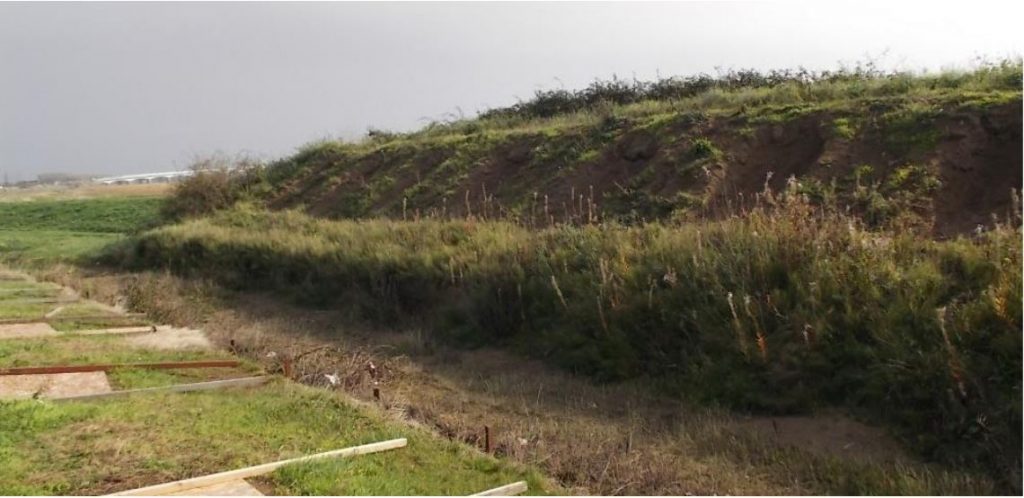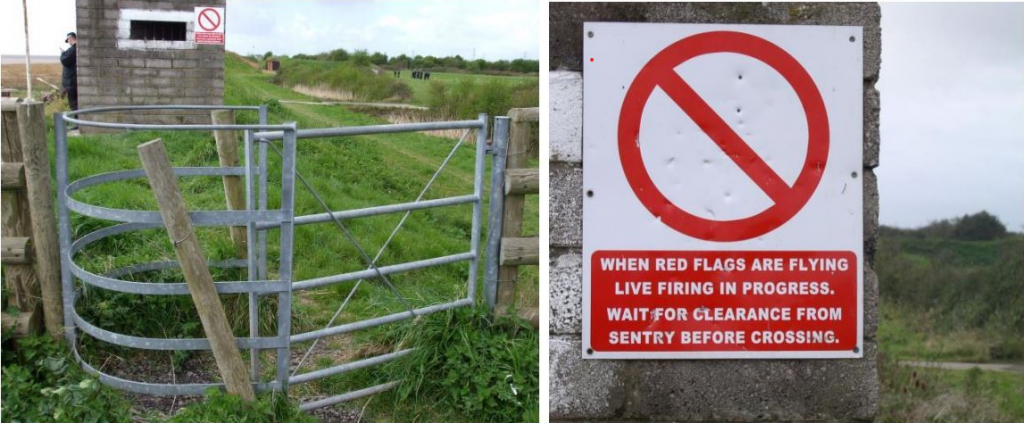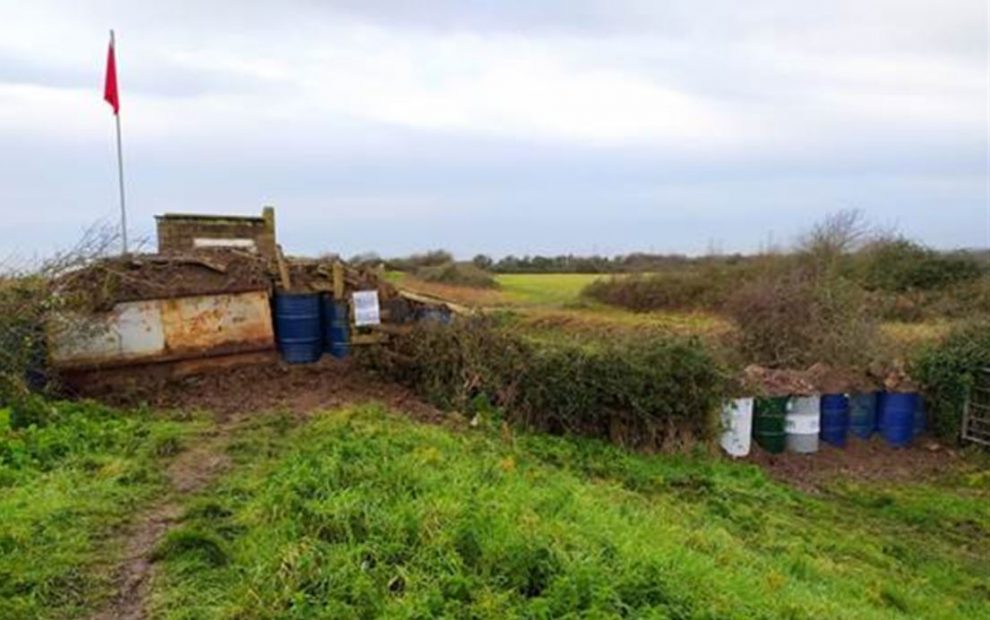A DISPUTED footpath that crosses a firing range on the banks of the Severn will be officially recognised as a route the public has the right to walk along.
The path was blocked by the Severnside Rifle Range in 2020 with the club saying it feared walkers were at risk from stray bullets if they wandered across its range following the seawall between Caldicot and Rogiet, east of Newport.
The club maintains an earth mound at its southern boundary is a “butts or bullet catcher” while walkers either believe it to be part of the seawall, or land where they have an established right of way, and should never have been prevented from walking across.
The firing range insisted the path runs behind the butts and has since fallen into the river bank mud and there had never been a public right of way across the raised bank which was part of the original Ministry of Defence firing range, with the land having been sold to its private owners in the 1990s.

Monmouthshire County Council was asked to decide if there is a public right of way after the club blocked the path prompting users to complain they had been denied access and meaning the right to use the assumed footpath had been brought into question.
The council issued an emergency temporary closure in December 2020 which was later extended but its rights of way officers, following an investigation and examination of maps, some dating back to the 1820s and 1830s, recommended the definitive map of public rights of way be amended to show the route, which isn’t part of the Wales Coastal Path, as a recognised footpath.
Council map officer Mandy Mussell told its licensing and regulatory committee: “When all the evidence is taken together it shows it is probably reasonable to allege a public right of way exists along the crest of the seawall.”
The committee was told it didn’t have to be satisfied beyond reasonable doubt that a footpath has been in use, with permission of a landowner at some point, only that the footpath, or right to access it as claimed, had existed. Councillors were also told that issues such as safety, or any nuisance caused, had to be put aside as all they had to consider was whether there is a right of access.
Ms Mussell said infrastructure at either end of the disputed path supported those claims and showed photographs to the committee: “It shows a flag staff and sentry box along with a metal kissing gate at the western boundary of Severnside Rifle Range. All the structures are installed to accommodate walkers.”
She added: “In other words, if there was no public right of way then there would be no need for the sentry box, kissing gate or ‘Flagstaff’.”
Chris Carter, of the Severnside Rifle Range, said the Wales Coastal Path had been diverted in the area, with an existing Ministry of Defence firing range also close by, and he disputed the council’s evidence including a heat map, provided by exercise tracking app Strava which showed how people had crossed the butts.
He said the kissing gates had been left in place after the coastal path had been diverted and disputed the route that was being claimed and said: “I’m Caldicot born and bred and the Collett family, who have lived there since 1647, will testify the footpath was in the river not on the bank.”

Tony Morgan, of the Cardiff Small Arms Club, who said he was also an MoD trained safety officer, said the sentry boxes weren’t to assist walkers: “They were to monitor ships in the channel and to make sure stray bullets were not going in or near them.”
Mr Carter also angrily objected to a 2008 photograph, taken by the council, of one of the sentry boxes which he said showed members of specialist police who guard the UK’s nuclear infrastructure training. He said: “It is a direct breach of national security and is putting their lives at risk.”
The club’s objections were supported by Labour councillor for Caldicot West End Jill Bond who claimed evidence from walkers, some who said they’d used the path for 50 years, shouldn’t have been admitted as they had accessed the path since it was closed.
Caldicot Cross Labour councillor Jackie Strong said: “The maps and various photographs show quite clearly people have used that path, or walkway, or made that journey through it for the last 30, 40, 50 years. That is the sole thing we need to decide today, have people used that path or not?”
The committee agreed the council will amend the definitive map to show the footpaths, to be known as numbers 83 and 84 Caldicot (354), and there will be a 42 day period for any objections to be made. If the objections cannot be resolved the issue will be decided by the Welsh Government which could order a public inquiry to be held.

















